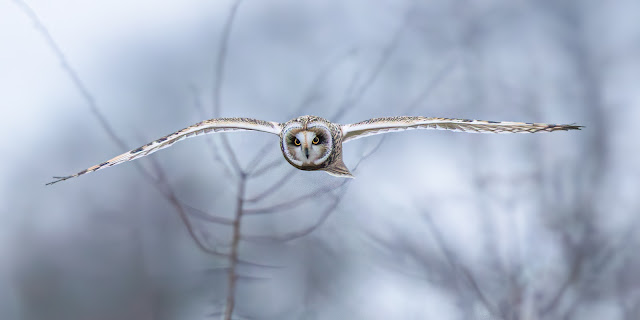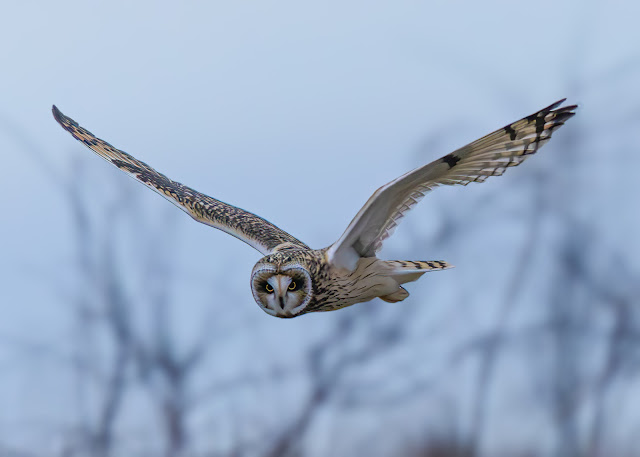A few days ago I made the short trip to Gloucestershire’s worst kept secret birding location to watch and photograph Short-eared Owls. I normally go to this location two or three times during the winter and have been blessed on occasion with some fantastic views. I’m told the farmer maintains the fields here specifically with the Short-eared Owls in mind, meaning maintaining scrubby uncut grass, - so hats off to him or her!!
Sometimes they take to the air at midday and sometimes not until its almost dark – it’s pretty much potluck. At a guess I would say that it depends how hungry they are as their ability to find their favourite prey, voles, is much reduced in wet windy weather. This was my first visit this winter and it was great to see that at least three owls have returned. They came out at 14:30 and continued to show well until sunset. In truth, it can be a bit of a circus at this site with many photographers present but on this occasion it wasn’t too bad with perhaps 10 cars present and I was able to find a fairly quiet spot on my own
Why on earth some gamekeepers would choose to shoot these graceful beautiful birds is quite beyond me – are we really all the same human species?
Here is a bit more information on the Short Eared Owl. They are a grass land specialist with an almost world-wide range. They are found on all continents except Antarctica and Australia and hence have one of the most widespread distributions of any bird. It is an attractive grey and sandy coloured bird with very noticeable bright yellow eyes. It is strongly dependent on the population of its primary food, rodents, and will wander nomadically in search of them in years when they are in short supply.
The ability of modern digital cameras in low lighting to capture reasonable images really is remarkable, especially so to someone whose photographic journey started with landscape photography and Kodachrome iso 25 slide film much too many years ago to contemplate. I was shooting at a minimum shutter speed of 1/2000th second at f5.6 and an Iso speed around 10,000. If I used Kodachrome 25 my shutter speed would have been 1/5th of a second and the birds in flight would have been a smeared out blur.
It's a real treat to watch these mesmerising marvels of nature interacting in flight, calling and hunting. I stayed until the last embers of the day when it was two dark to watch them anymore and then dragged myself sadly away.
Footnote – my blogs are posted with sometimes rather imaginative spelling and grammar due to my extreme dyslexia!






Comments
Post a Comment